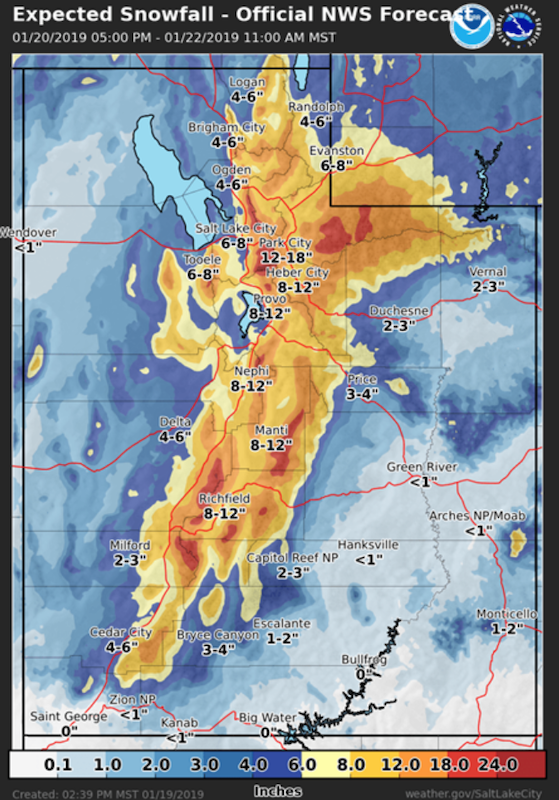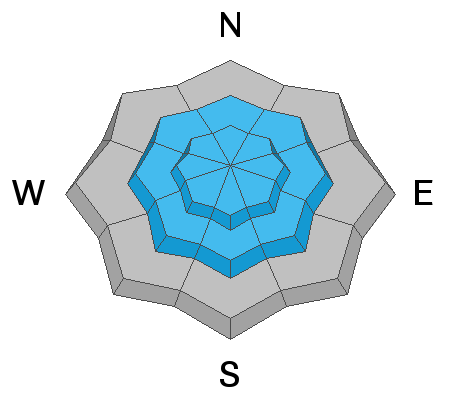Forecast for the Skyline Area Mountains

Issued by Brett Kobernik on
Sunday morning, January 20, 2019
Sunday morning, January 20, 2019
The avalanche danger remains CONSIDERABLE today. The snowpack is unstable in many areas and is especially dangerous on the north end of the Skyline which has received the most snow out of the last two storms. Human triggered avalanches are likely and could break up to 3 feet deep. Slopes over 30 degrees in steepness on the east half of the compass are the most suspect.
The avalanche danger will most likely reach HIGH on Monday during the next storm and we will have avalanche warnings issued for the Manti Skyline.

Low
Moderate
Considerable
High
Extreme
Learn how to read the forecast here








